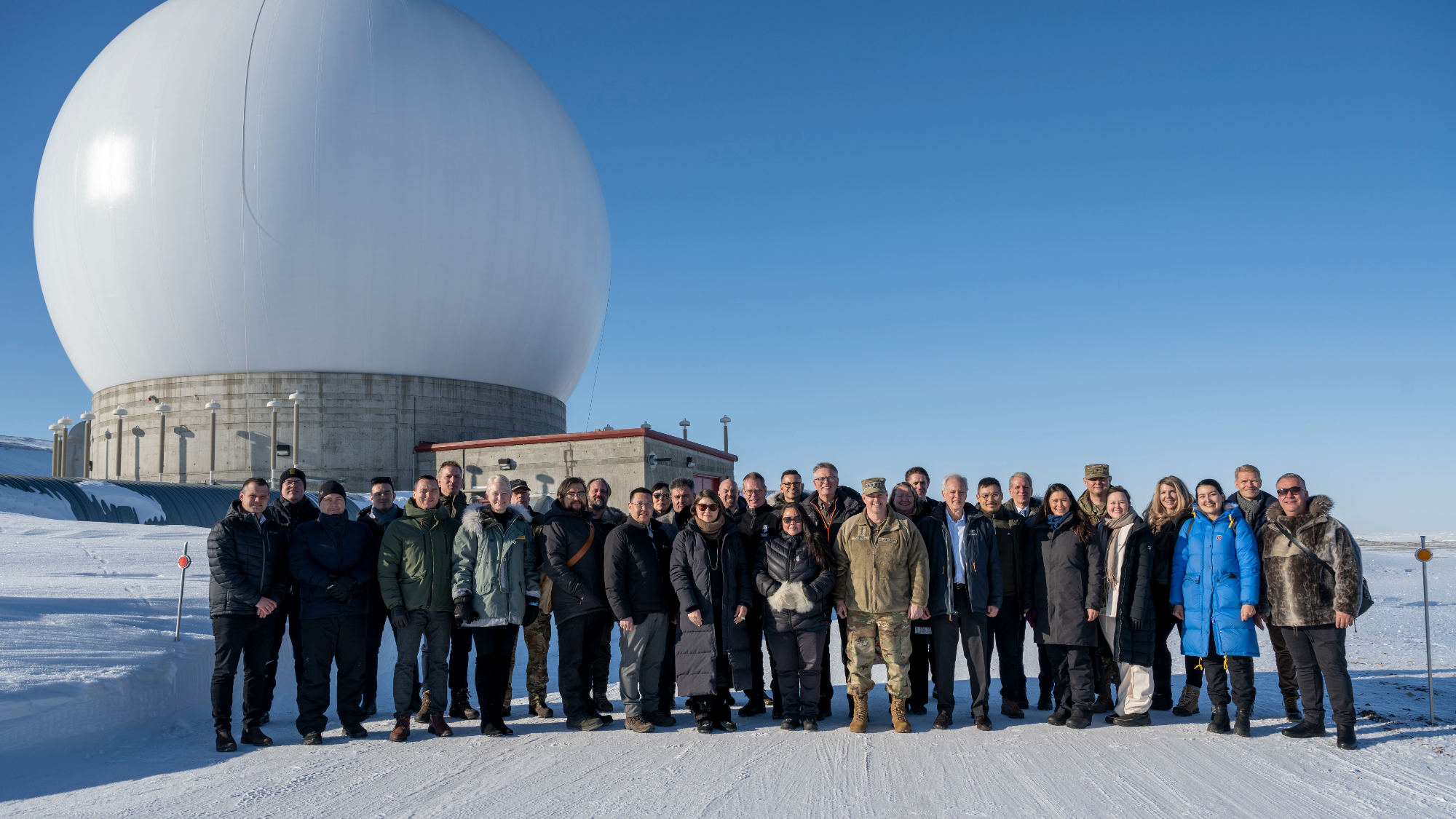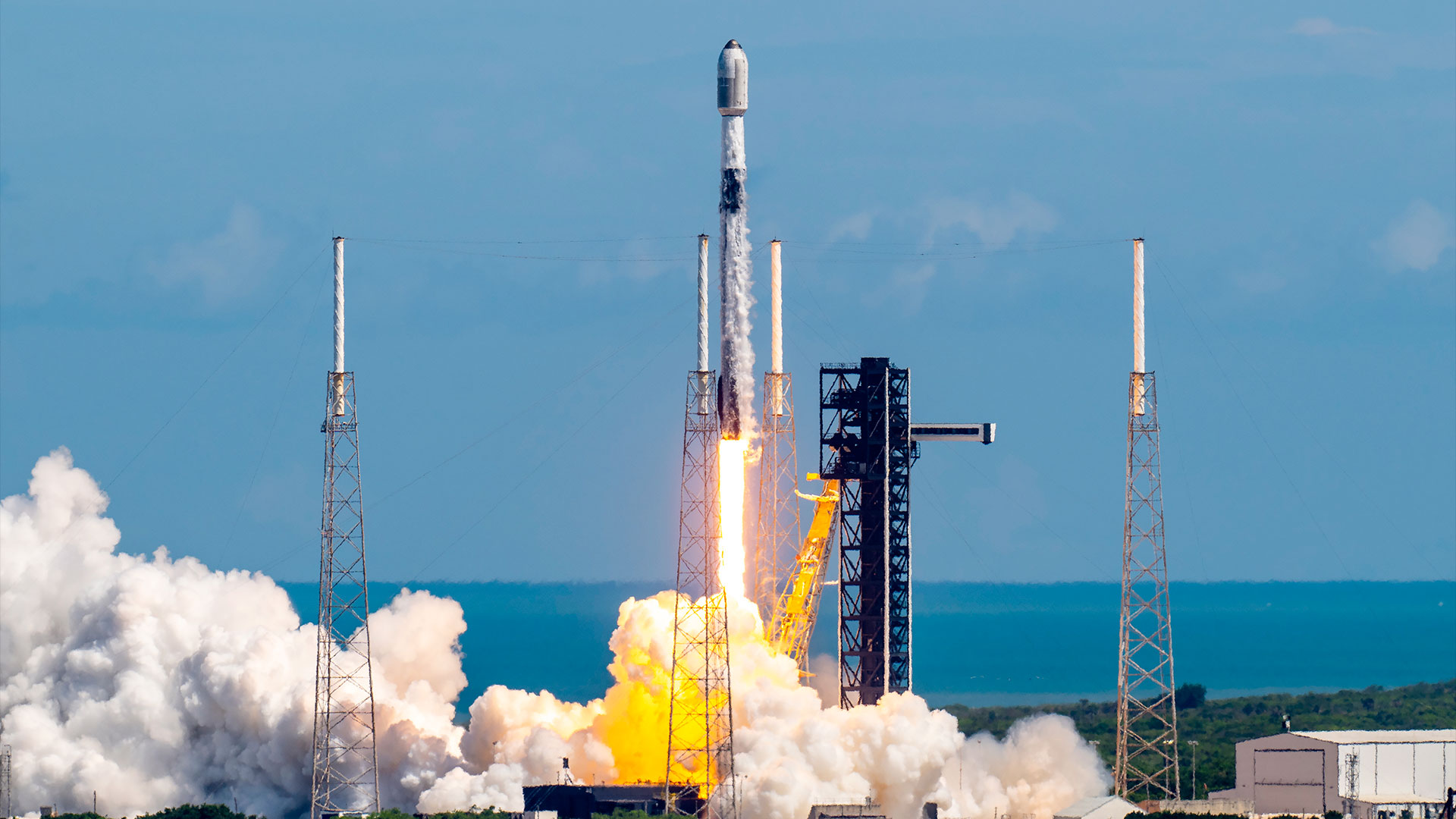What is the US Space Force doing in Greenland?
"Maintaining a strong presence and projecting power from the Arctic is paramount."

The Danish territory of Greenland and its strategic importance for the U.S. and NATO (the North Atlantic Treaty Organization) have been making headlines recently.
Largely lost in the media furor, however, are the reasons why Greenland is vital for North American security. One of those reasons concerns the role of a crucial military installation on the world's largest island: Pituffik Space Base.
"The Department of Defense has unveiled a new Arctic strategy, underscoring the region's critical importance to our national security and that of our allies," U.S. Space Force Chief Master Sgt. John Bentivegna said when he visited Pituffik in November 2024.
Pituffik (pronounced bee-doo-FEEK) sits on Greenland's northwest coast, 700 miles (1,126 kilometers) north of the Arctic Circle. That's already a strategic location, and it's likely to become even more important as the Arctic warms and allows more shipping traffic, mining and other commercial activity, experts say.
Related: What is the U.S. Space Force and what does it do?
"Maintaining a strong presence and projecting power from the Arctic is paramount," Bentivegna continued. "We must fortify it, ensuring that we capitalize on our unique position at the top of the world to safeguard our interests and those of our allies."
As the Department of Defense's northernmost installation, Pituffik plays a key role in missile defense and satellite communication. The Space Force says the base's vantage point helps enable "space superiority."
Breaking space news, the latest updates on rocket launches, skywatching events and more!
Pituffik is home to the 12th Space Warning Squadron (12 SWS), which supports three critical missions: missile warning, missile defense and space surveillance. To carry out these missions, 12 SWS uses a two-sided, solid-state phased-array radar system, which the unit operates around the clock.
With an ability to detect ballistic missiles that could endanger the U.S. and Canada, the squadron can execute missile warning and missile defense missions. If necessary, the unit can provide early warning via the Missile Warning Center and the North American Aerospace Defense Command (NORAD).
12 SWS also gathers data on objects in orbit, which the unit sends to the 18th Space Control Squadron at Vandenberg Space Force Base in California, as well as a several other DoD intelligence and defense centers.
A detachment of the 23rd Space Operations Squadron also works out of Pituffik. Detachment 1 (Det-1), also called the Pituffik Tracking Station, tracks and commands high-priority government satellites from its location, which is about 3.5 miles (5.6 km) southeast of the main base.
Det-1 represents the northernmost station in the Satellite Control Network, a global system that provides a wide range of services for satellite programs from United States and allied governments.
Conducting more than 15,000 satellite contacts every year, the Pituffik Tracking Station provides telemetry, tracking and commanding for satellites that are used for surveillance, communication, navigation and weather.
Pituffik Space Base has a long history that predates the Space Force. Constructed during the summers of 1951 and 1952, Thule Air Base, as it was then known, came about after Denmark and the United States signed a defense treaty.
Thule AB became part of the Space Force when the Armed Forces branch was established in 2019. In 2023, Thule AB was renamed Pituffik Space Base, after the former Inuit hunting settlement that was near the base's current location. Today, the space base has about 550 residents.
"From here, we have maintained an unbreakable bond working towards the collective defense and stability of the northern Arctic," the Space Force's chief of space operations, Gen. Chance Saltzman, said during the 2023 renaming ceremony. "Together, the men and women of Pituffik Space Base and our Greenlandic and Danish partners will ensure a safe, secure and prosperous future both in space and above the Arctic Circle."
The facility is important for a variety of other reasons as well, military officials have said.
"Pituffik Space Base hosts a variety of organizations with logistical support in the Arctic, including NASA, the Royal Canadian Air Force, and multi-national climatic, seismic and deep space research," U.S. Space Force Col. Jason Terry said when the base hosted Denmark's king and queen in June 2024.
Join our Space Forums to keep talking space on the latest missions, night sky and more! And if you have a news tip, correction or comment, let us know at: community@space.com.
Julian Dossett is a freelance writer living in Santa Fe, New Mexico. He primarily covers the rocket industry and space exploration and, in addition to science writing, contributes travel stories to New Mexico Magazine. In 2022 and 2024, his travel writing earned IRMA Awards. Previously, he worked as a staff writer at CNET. He graduated from Texas State University in San Marcos in 2011 with a B.A. in philosophy. He owns a large collection of sci-fi pulp magazines from the 1960s.

